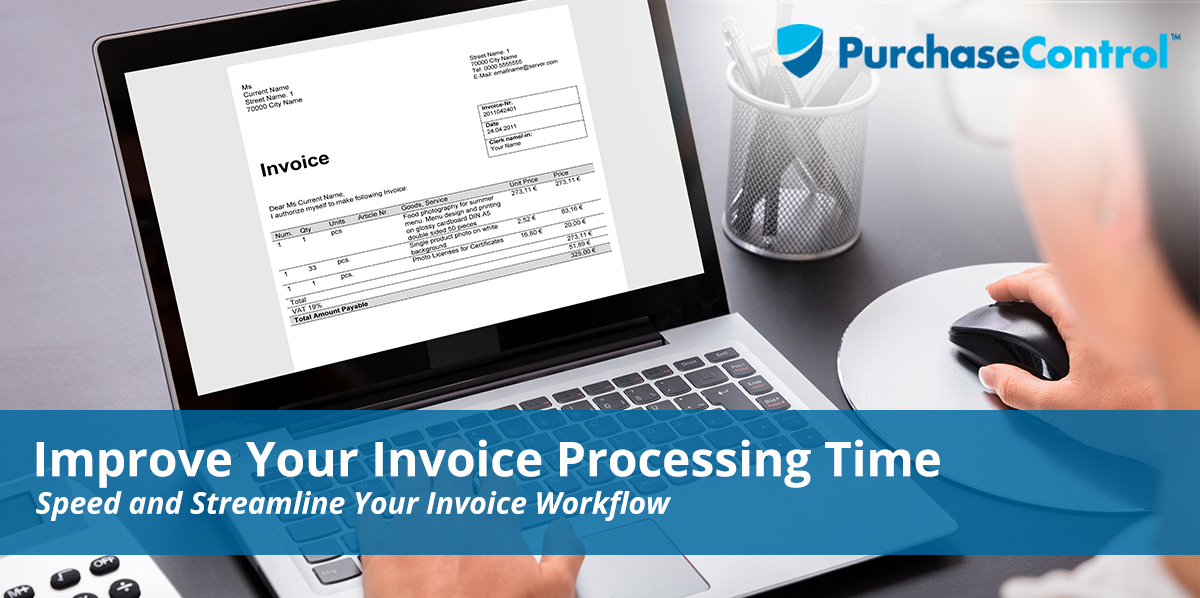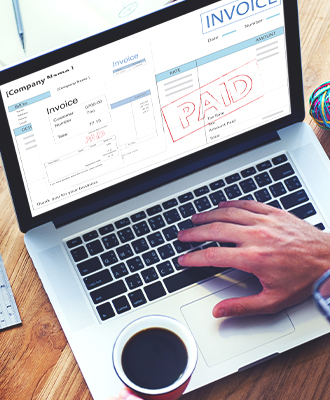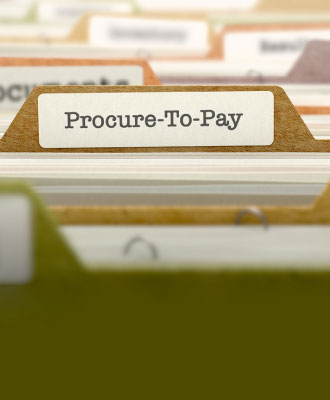Improve Your Invoice Processing Time
A key element of establishing and then expanding the success of your business is effective use of benchmarks and performance metrics. And in procurement, one of the most valuable of these key performance indicators (KPIs) is invoice processing time—along with the variables that affect it.
Is your company getting the most for its money when processing invoices and making vendor payments? Swift and efficient invoice processing through your accounts payable department (AP department) can be a source of not just cost savings, but real value, provided you’ve taken advantage of the tech and tools necessary to optimize it.
Why Invoice Processing Time Matters
Handling accounts payable generally falls on the shoulders of your AP department, but can vary and might be the purview of Marketing, IT, or even specialized administrators. And while the process can be boiled down to “receive invoice, review invoice, pay invoice,” the entire procure-to-pay (P2P) process itself may have several additional workflows built into it.
As a result, multiple opportunities for approval workflow delays, human error, and late payments can add needless expense to the process, draining potential value from process optimization while increasing costs.
Based on standards set by the American Quality and Productivity Center (APQC), the total cost of the ap function (expressed as a percentage of revenue) for “top performing” businesses hovers at around .04%. By comparison, “bottom performers” lag far behind at .16%—four times the cost to their well-optimized peers.
Another set of benchmarks, established and released by research firm Ardent Partners in 2017, set a more dollars-and-cents standard for invoice processing efficiency, including:
- An average cost of $2.74 to process a single invoice for top performers ($15.02 for all others)
- An average processing of 5 days to process a single invoice by top performers (12 days for all others)
- An invoice exception rate of 5% for top performers (19.9% for all others)
- 58.4% of invoices processed “straight-through” for top performers, as compared to 18.1% for all others
- 51.1% of invoices submitted electronically by vendors to top performers, as compared to 18.9% for all others.
- 71% of all invoices accurately linked to a purchase order (PO) for top performers, as compared to 8% for all others.
These metrics speak to the potentially powerful effect even small positive changes to invoice turnaround time, approval processes, and accurate invoicing can have on both cash flow and profitability.
Choosing an effective automation solution is the most obvious and straightforward improvement you can make for better invoice processing, especially if your company handles large invoice volumes, is currently relying on paper invoices, or both.
Invoice Processing Basics
Typically, the entire P2P process has several groups of stakeholders. These include:
- Management and C-Suite Staff who handle high-level decision making and planning.
- Accounts payable staff who process the invoices, verify invoice data, perform data entry, and pursue exceptions.
- Gatekeepers who provide approvals at one or more stages.
- Vendors within the company’s supply chain who fill orders for goods and services.
Depending on your business, its specific workflows, and the number of invoices you process, your team will handle a range of different invoice types, including:
- Recurring Invoices, which are issued for repeating purchases at regular intervals.
- Utility Invoices, which are used to purchase goods and services for production
- Interim Invoices, which are issued at agreed-upon intervals to cover portions of large ongoing projects.
- “No PO” Invoices, which can occur when rogue spend (i.e., indirect expense purchases made outside the purchasing system) occurs.
- PO-Matched Invoices, connected to an existing purchase order and shipping/receiving documentation for approved goods and services.
- Credit Memos, which are vendor payments issued back to your company to cover refunds, rebates, incentives applied to orders meeting certain requirements, etc.
In general, invoices travel the same path: Vendor>AP (or staff in charge of invoice processing)>approval staff (if required for certain amounts)>additional approvals from upper management (if necessary)>AP for vendor payment (and reconciliation with the general ledger). Hitches at any stage of the process can be costly, which is why identifying and eliminating as many choke points, errors, and process inefficiencies as possible is so important.
Common Challenges to Effective Invoice Processing
Human error, delays (and the resulting fees for late payments), and process inefficiencies are some of the most commonly cited pain points in the invoice processing workflow. A lack of centralized data management can create organizational chaos as well, with redundancies, rogue spend, and invoice fraud taking fatal nibbles from your company’s revenue.
In many cases, the common source of these headaches lies with manual invoice processing.
Bringing the power of a cloud-based procurement solution to your accounting system, enterprise resource planning system (ERP system) and AP processes can ease all of these pain points simultaneously. Using artificial intelligence and machine learning, ap automation simplifies your workflows and replaces time-consuming manual invoicing with improved business processes that cut costs and boost productivity.
Data entry is replaced by automatic population of invoice data fields (including important contractual content, vendor payment terms, due dates, etc.) from the central database. Duplicate invoices and other human errors are drastically reduced. Vendor invoices are automatically cross-connected to shipping documents and purchase orders using three-way matching. Electronic invoicing support means less paper waste and faster vendor payments, turning late payments (with their accompanying late fees) into on-time, accurate payments—and early payment discounts.
Choosing an effective automation solution is the most obvious and straightforward improvement you can make for better invoice processing, especially if your company handles large invoice volumes, is currently relying on paper invoices, or both.
But before you can make the digital switch, it’s important to evaluate your current invoice processing, exception rate, and turnaround time (among other factors) in order to target the areas most in need of improvement.
Streamlining Your Invoice Processing for Maximum Performance
To choose the right automation solution for your company’s needs and, by extension, begin optimizing your invoice processing, you can follow a few simple steps.
Evaluate Your Existing Processes
To begin, simply consider these questions, and how their answers affect the efficiency and accuracy of your invoice workflows:
- What’s our current invoice volume per week? Per month? Per year?
- Are paper invoices used, and to what extent?
- How is data entry handled? Exceptions? Fraud and rogue spend?
- Are vendor discounts and incentives being fully utilized? Conversely, how much value is lost to late payments and penalties from inefficiencies and delays?
- How are vendor disputes handled? Is supplier relationship management a priority?
- Is a three-way match used to connect invoices to POs and shipping documentation?
- What approval workflows exist? What pain points (e.g., lack of reminders, frequent delays due to lack of real-time access on mobile, etc.) slow these workflows?
- What is the average total cost to process each type of invoice? The average total time to process each type of invoice?
Compare Your Performance
Benchmarks vary, but those provided by the AQPC and other data firms can provide you with reliable guidelines for your own performance, both in general and as compared to others in your market. Comparing your average processing costs and times, for example, can give you insight on how much room for improvement you have.
Make Targeted, Strategic Improvements
Auditing your current invoice processing, and comparing it to industry benchmarks, can give you some invaluable perspective on which areas are most in need of immediate and substantial adjustment. Identifying the value each step in your P2P process adds (or doesn’t!) can provide you with the information you need to choose an AP automation solution that will help you make the shift to greater productivity and value.
Even if you don’t make the jump right away, knowing which areas of your invoice processing workflow are most in need of an overhaul can start saving you money as you correct them. For example, if you’re processing 20,000 invoices a quarter, slashing even $1.15 from the cost of processing each invoice will save you a whopping $23,000.
Stop Throwing Money Away
Are your existing invoice processing workflows costing you a premium when it’s time to pay the piper? Some careful review and an upgrade or two can mean the difference between a lean, mean payment machine and a company whose bottom line is shot full of holes by delays, errors, and fees. Take a closer look at your P2P function, and start recovering value, instead of wasting money, when you process invoices.
Automate to Accelerate Your Invoice Processing with PurchaseControl
Find Out How








